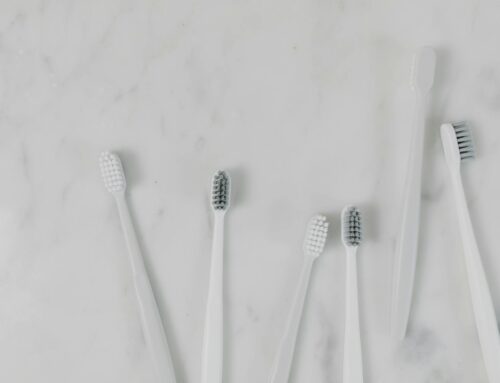A new device that has the potential to screen for Oral Cancer has been created. Current methods of oral cancer detection are very limited. Therefore, this new device offers an exciting development. The researchers are hoping that this device could have a very positive impact on treatment outcomes for oral cancer.

In an exciting development, new research has resulted in the development of an intraoral camera that could screen for oral cancer [1].
Oral cancer is a very difficult condition to live with. Current methods of detection are limited.
This development could be significant in improving treatment outcomes for oral cancer. This is especially due to its ability to detect cancerous cells early.
What is oral cancer?
Oral cancer is a form of cancer that impacts the mouth. Despite the condition being a lesser-known type of cancer, it has the potential to be fatal.
Typical symptoms include lumps or bumps in the mouth, bleeding or numbness, ear pain or persistent sores on the face.
The American Cancer Society estimate that in 2024, approximately 60,000 new cases of oral cancer will appear in the United States, with about 12,000 deaths from the condition expected [2].
Early diagnosis is very important with oral cancer. The earlier that treatment begins, the better the chances are of positive treatment outcomes.
While anyone can be vulnerable to developing oral cancer, research shows that two thirds of oral cancer cases are linked to tobacco and alcohol intake [3].
Research efforts
Dr. Petra Wilder-Smith has spent the last two decades trying to develop devices that could help to detect oral cancer. This has involved significant trial and error.
Wilder-Smith has said that “my goal is to improve oral cancer outcomes, because it’s the only major cancer whose outcomes are still getting worse” [1].
Wilder-Smith has worked with Rongguang Liang – who works at the University of Arizona’s Wyant College of Optical Sciences, and as the Director of dentistry at University of California Irvine’s (UCI) Beckman Laser Institute & Medical Clinic – to develop a new device to screen for cancer [1].
Current methods of oral cancer detection have severe limitations. The current approach involves a professional looking into a patient’s mouth and feeling for lumps or lesions [1]. However, the nature of the lumps means that they are easily missed.
Therefore, there are limitations of this method. When potentially cancerous lumps are found, an oral biopsy follows, where a small sample is taken to test for cancer [1].
However, lumps can be small, and appear alongside other small, yet non-cancerous, lumps. As a result, it is very difficult to detect oral cancer.
The new device
With the limitations of detection in mind, scientists from around the world have sought to find out ways of improving this situation. Wilder-Smith and Liang have now developed a new device.
The device takes the form of a camera that can be placed in a patient’s mouth. The camera provides an imaging device that dentists could use to improve precision in diagnosis [1].
Intraoral cameras are very useful and versatile tools which are used throughout healthcare. They are shaped like a pen, and covered with a disposable sheath, which allows the prevention of cross-contamination [1].
The cameras are inserted into the patient’s mouth and can be maneuvered to capture detailed images of each tooth and the surrounding areas. These images are displayed on a computer screen for a clinician to analyze [1].
Intraoral cameras do not expose patients to any radiation exposure – which is something often seen in cancer treatments. Therefore, this is a big benefit of this approach.
Ten prototypes of the product have been created to date. The most recent version is currently undergoing further testing and algorithm adjustments [1]. The signs are very positive though.
Testing on the device has revealed that the intraoral camera should boost the accuracy of oral cancer detection significantly. This will improve treatment and survival rates.
Instead of the detection rate being between the current 40-60%, it is due to be at 87-93% – representing a marked increase [1]. This is an impressive number, and would greatly improve approaches to identifying oral cancer.
Liang has said that this device “will eliminate the guesswork in interpreting clinical findings, leading to earlier diagnoses and improved patient outcomes” [1].
What will happen next?
Wilder-Smith and Liang have secured a patent for their device. The patent is joint-owned by UCI and the University of Arizona [1].
Alvin Viray, director of licensing at UCI’s Beall Applied Innovation, praised the role of Wilder-Smith, saying that she “has been nothing short of exceptional” [1]. Moreover, he said that the “development of an imaging device for oral cancer detection is both innovative and commercially valuable, while promising to make a profound impact on public health” [1].
The next step will be to apply for licensing. This will involve Wilder-Smith and Liang seeking a second stage of investors, ahead of potentially marketing the product [1].
This is likely to take a while, with the product then needing testing to ensure it is safe, and is capable of detecting oral cancer.
The hope is that in the future, this device will be found at every dental clinic, and will improve the diagnostic phase of oral cancer.
As early detection is so important, having this device readily available to dental clinics should improve treatment outcomes – which is of key importance.
Thinking points…
[1] Early detection of oral cancer is crucial. Dentists are trained to spot the signs of oral cancer. Therefore, remember to attend regular dental appointments, as any worrying signs can be spotted and subsequently acted upon. It is important to attend the dentist at least once every six months. We recommend that you book an appointment now!
[2] Do you have any signs of oral cancer? Make sure that you regularly check your mouth for any abnormal lumps, bumps, or other unusual signs. If you do see anything that you are concerned about, we recommend booking a dental appointment immediately. A dentist can take a look at your mouth closely, and provide more information. Remember to check your mouth regularly!
What we offer at Taradale Dental
Taradale Dental is a dental clinic based in Calgary, Alberta, Canada. At our Calgary dental clinic, we provide a range of services for our patients.
We advise our patients to attend our Calgary dental clinic at least twice per year for a regular dental check-up. At these check-ups, we provide a comprehensive review of a patient’s oral health. If any problems are detected, we have many treatments available. For example, these include cavity fillings and root canals. To strengthen your oral health, we recommend brushing your teeth at least twice a day and flossing regularly.
Here at Taradale Dental, we also have some cosmetic treatments available! These include dental implants, teeth whitening and Invisalign™! Our patients find that these treatments have a positive impact on their appearance, confidence and self-esteem.
Moreover, the fees of our treatments at our Calgary dental clinic Taradale Dental are set in line with the Alberta Dental Fee Guide. This ensures transparent and fair pricing, with no hidden costs.
We hope to see you soon at our Taradale Dental clinic in Calgary! You can find out more about us by visiting our website https://taradaledental.ca/!
References
[1] HospiMedica.com. Intraoral Camera for Cancer Screening Eliminates Guesswork in Interpreting Clinical Findings. Available: https://www.hospimedica.com/critical-care/articles/294801922/intraoral-camera-for-cancer-screening-eliminates-guesswork-in-interpreting-clinical-findings.html. Last accessed: 27th July 2024.
[2] American Cancer Society. (2024). Key Statistics for Oral Cavity and Oropharyngeal Cancers. Available: https://www.cancer.org/cancer/types/oral-cavity-and-oropharyngeal-cancer/about/key-statistics.html. Last accessed: 27th July 2024.
[3] Kademani, D. (2007). Oral Cancer. Mayo Clinic Proceedings. 82 (7): p878-887. DOI: https://doi.org/10.4065/82.7.878.


